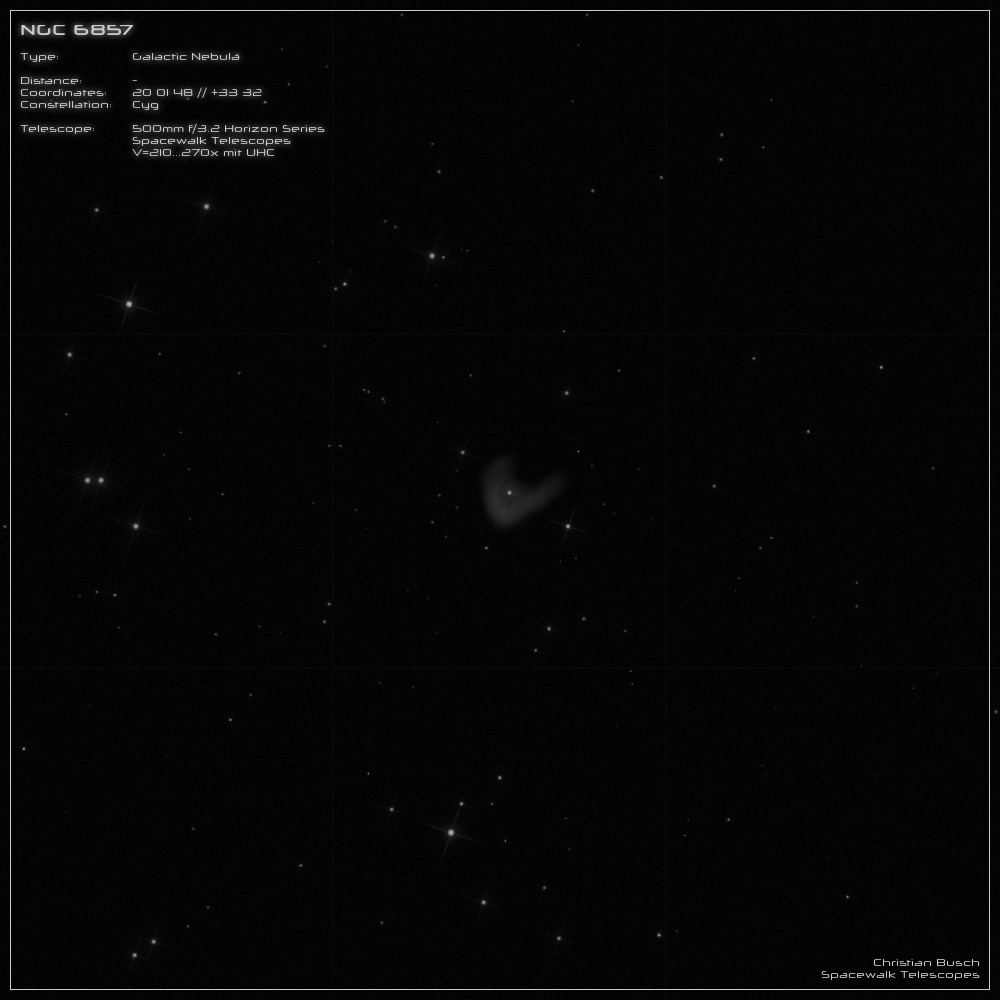NGC 6857, Galactic Nebula
There is not much information about NGC 6857 on the web - even scientific papers are very rare. But I was able to collect some information
about the physics behind the nebula:
For quite a while, the nature of NGC 6857 was not quite clear. At first the object was thought to be a planetary nebula - this was due to its
shape, its size of about 60" (arcseconds) and a star in the center of the nebula, which was thought to be the central star. But later the object
was examined more exactly by spectroscopy and it was discovered that it is rather an ionized HII region - more precisely the brightest part
of the nebula "Sh 2-100", which is much more extended and fainter than NGC 6857.
I did not find any information about the distance. But since the HII region is pretty small with a diameter of less than one arcminute (about
the size of Jupiter at opposition), NGC 6857 must be quite far away. Assuming a true diameter of 5 light-years, this gives a distance of 23,000
light-years. All the more surprising, as the nebula is apparently not dimmed by some dust in front of it, which can be found everywhere in
the dense summer Milky Way.
----------------------------------------------------------------------------------------------------------------------------------------------
In my 20" f/3.2 telescope NGC 6857 appears quite bright even at a low magnification of 120x, but also very small.
Because of the high surface brightness you can easily magnify the nebula to 270x or even 380x using a UHC filter. Then the HII region reveals
some details. The "central star" is easy to see and the nebula itself has a triangular structure in the shape of the letter "V". The southern part
appears brighter and to the north two fainter extensions extend, giving the nebula its characteristic shape. The surrounding area is very starry
due to the dense milky way.
In any case, a great object with an unusual shape that I can only recommend.

